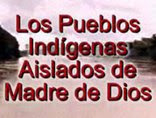El arte ha sido en una manera semejante la manera en que el hombre ha almacenado sus respuestas al mundo que le tocó vivir. Los avatares del hombre a través de los siglos están fielmente reflejados en la literatura, en la pintura, en todas las formas en las que hemos luchado y testimoniado contra la fugacidad del tiempo, contra la muerte.
Hace muchos años se fundó en Lima el Museo de Arte impulsado por un grupo que bajo el nombre de Patronato de las Artes presidía el Dr. Carlos Neuhaus Ugarteche y que consiguió que la Municipalidad de Lima le cediera el llamado Palacio de la Exposición. La colección ha exponerse fue hecha sobre la base de la extensa y valiosa Memoria Prado. Posteriormente se sumaron otras, entre ellas un importante aporte de la Colección de Pedro de Osma y finalmente la Pinacoteca de la Municipalidad de Lima cedió varias pinturas capitales para una visión del Arte Peruano del Siglo XIX. No debe olvidarse tampoco que durante el gobierno de Manuel Prado se adquirió el estudio completo del Taller del pintor Baca Flor en Paris.
Desde su origen se puso mucho empeño en que figurara junto al nombre del Museo la leyenda “Dos mil años de Arte Peruano”. Indudablemente que la intención de sus creadores fue muy clara: erigir un Museo que fuera depositario de las obras que constituyen la historia del arte peruano.
Desde su origen el Museo conoció las dificultades con que tropezaba toda empresa seria que se empeñara en la difusión cultural en nuestro país. Con el paso del tiempo las condiciones fueron mejorando y si el Estado peruano siguió siendo incapaz de reconocer la importancia de una labor semejante para el verdadero desarrollo integral del país, la empresa privada empezó lentamente a llenar esa función. (El caso de Manuel Mujica Gallo que ya en 1955 dio su apoyo total al Instituto de Arte Contemporáneo constituye una excepción inolvidable).
La llegada del Ingeniero Walter Piazza a la Presidencia del Patronato de las Artes y por ende a la dirección del Museo de Arte marcó el inicio de una nueva etapa.
Finalmente, hace unos meses el Museo ha recibido muy importantes donaciones y apoyos que han ampliado definitivamente sus posibilidades, circunstancia de la que nunca podremos estar suficientemente complacidos. Han entrado a colaborar generosa y desinteresadamente aficionados y coleccionistas de generaciones recientes que aseguran la marcha y el crecimiento de una institución cuya importancia sería difícil exagerar. Pero esto trae también una responsabilidad, una responsabilidad que es tan grande como la trascendencia de la tarea y a la que es ineludible prestarle la importancia que merece.
El Museo de Arte que hoy se ha rebautizado como el Museo de Arte de Lima tiene una función que debe ser entendida en toda su dimensión. Ese Museo es el depositario de la memoria visual del hombre peruano que abarca del primitivo habitante de las sierras de Ancash hasta los artistas de nuestro siglo, que han logrado expresar, cada uno de acuerdo a su época y a su circunstancia, qué cosa ha sido y es vivir en esta parte del mundo.
Hace unos días tuve la oportunidad de ver la estupenda exposición retrospectiva de Carlos Quizpez Asín en el Centro Cultural Peruano Británico y no he podido evitar preguntarme si las donaciones que ha recibido el Museo han sido bien empleadas y si ha sido un criterio correcto la decisión de ir a comprar a las Ferias de Paris, Madrid y Nueva York obras, seguramente interesantes de jóvenes pintores vanguardistas peruanos y menos defendible aún, obras de respetables artistas de otras nacionalidades.
Si tenemos presente el hecho que el Museo carece de obras representativas de los más importantes pintores del Siglo XX ya fallecidos, es inevitable preguntarse si es lógico adquirir experimentos, por interesantes que puedan parecer y por muy a la moda que puedan estar, cuando en el Museo no hay cuadros de la mejor época de Grau, ninguno de sus inolvidables desnudos y Naturalezas Muertas, de las obras cubistas de Ricardo Sánchez, de Juan Manuel de la Colina, en fin de las generaciones más recientes a las que pertenecen Julia Navarrete y tantos otros artistas interesantes.
Cuando Sérvulo Gutiérrez uno de los mejores pintores nacidos en éste país está tan pobremente representado en el Museo y que se sepa no ha habido ningún intento por hacer entrar en la colección, de una manera o de otra, los magníficos Sérvulos de la Colección de la Señora Doris Gibson, fallecida recientemente. Uno no puede impedir de preguntarse qué tipo de colección es la que se pretende crear.
Creo que todavía están a tiempo los actuales dirigentes del Museo, a quienes estoy lejos de atribuirles otras intenciones que no sean las mejores, de asumir esa responsabilidad histórica -el término no es exagerado- pues conforme pase el tiempo será cada vez más difícil conseguir las piezas que integren un panorama completo y justo de las obras producidas en éste país y que representan el camino recorrido no solamente por nuestro arte sino inevitablemente por nuestra historia.

















































